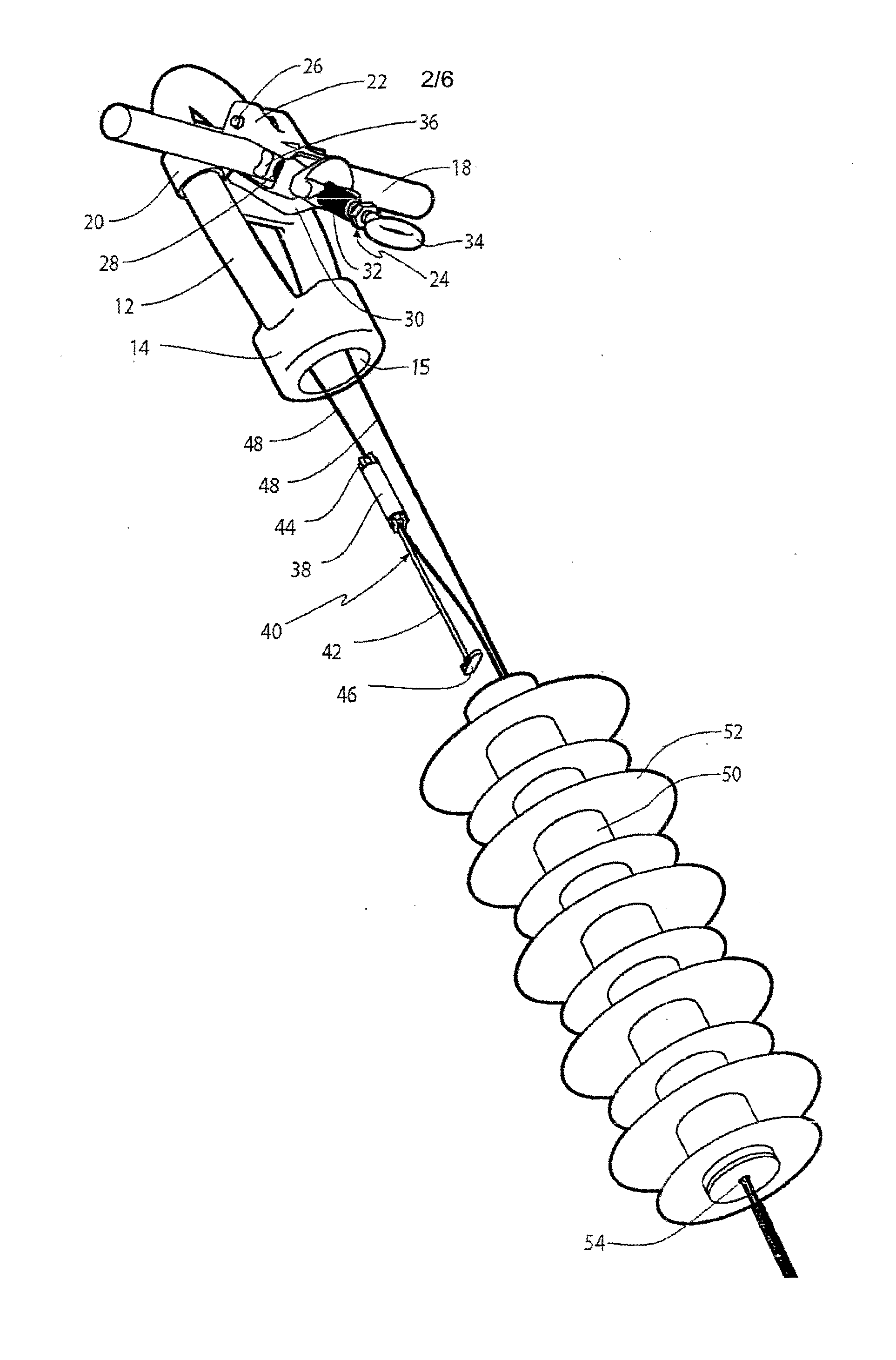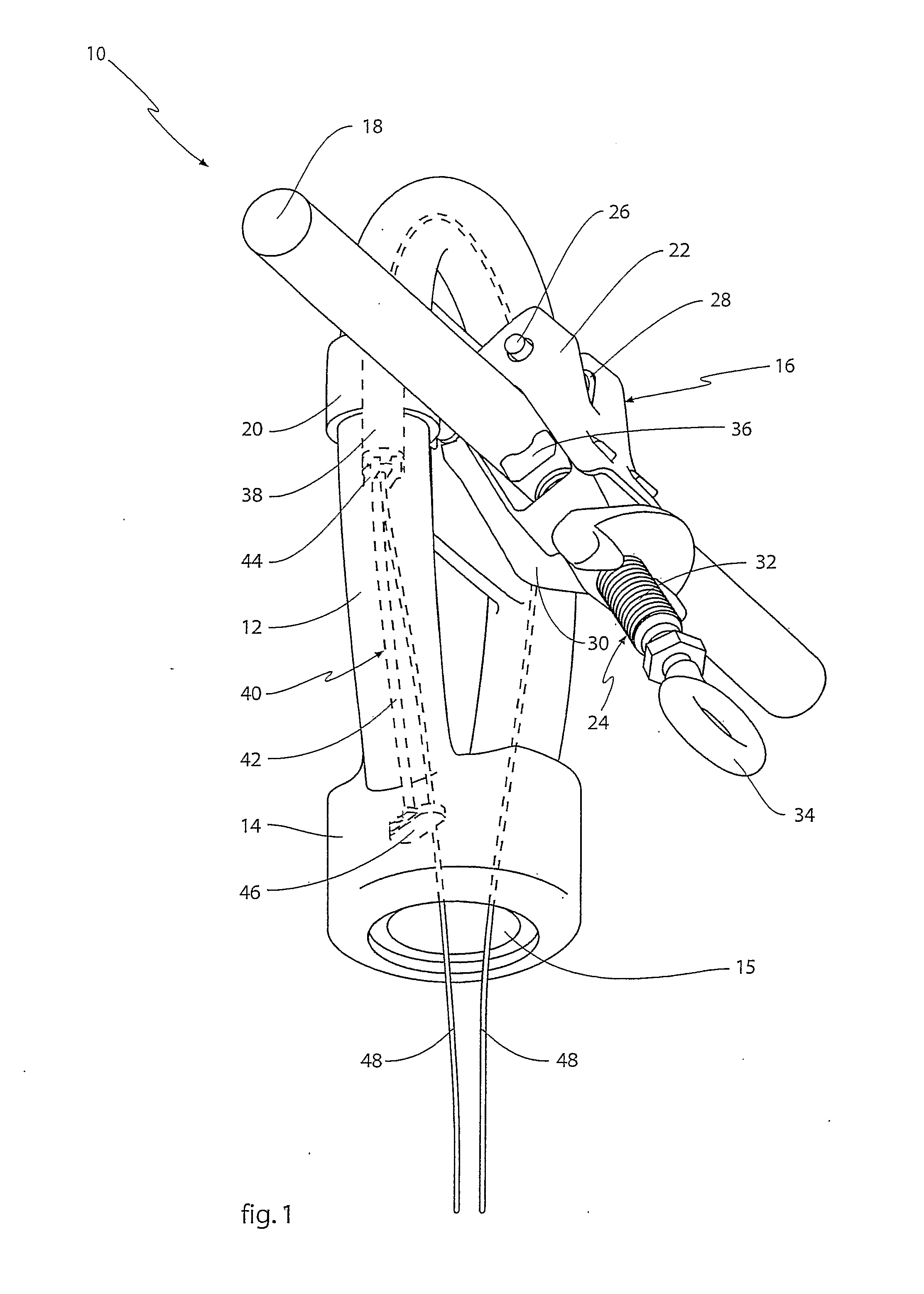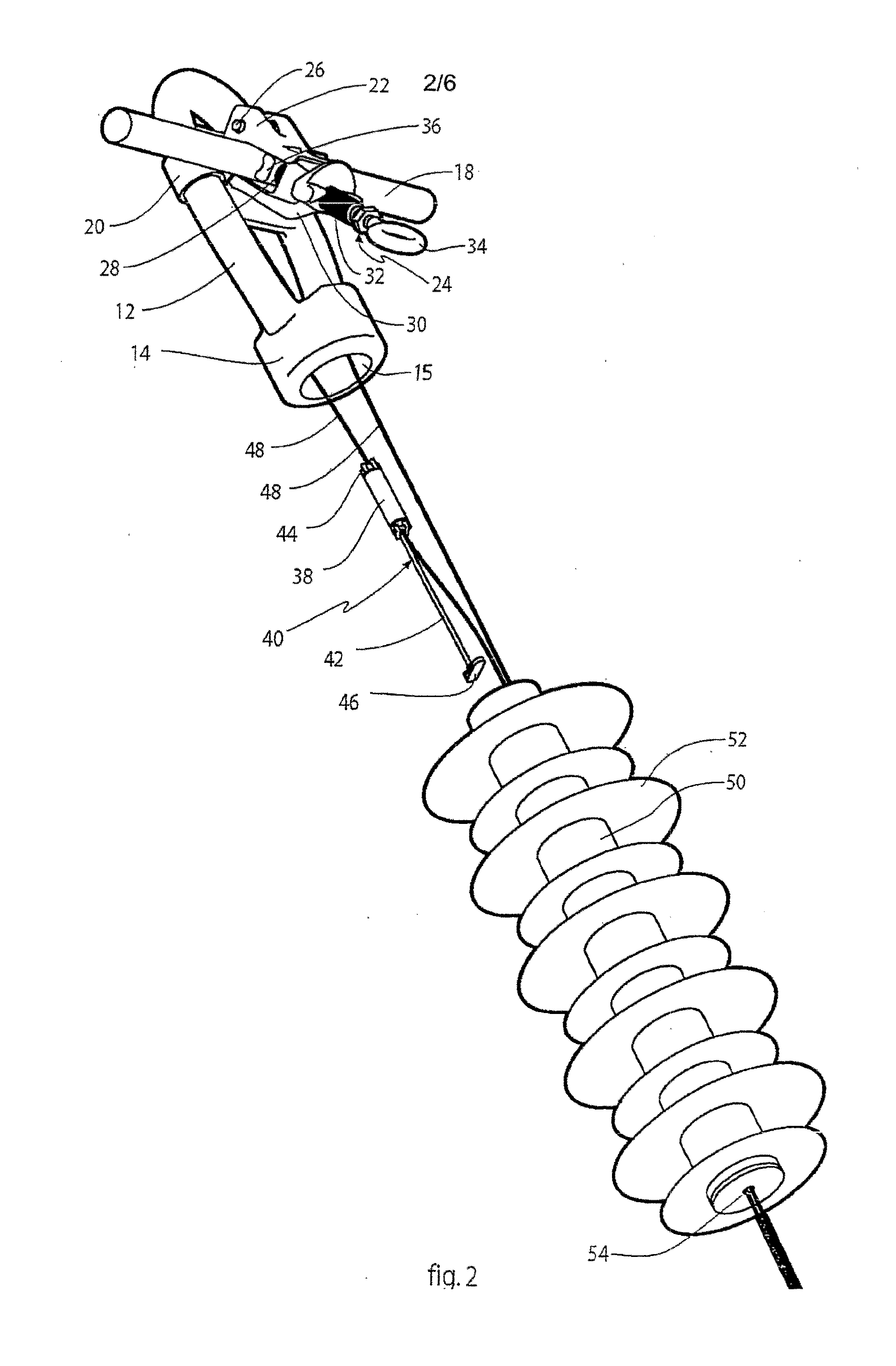Faraday optical current sensor arrangement
a technology of optical current sensor and arrangement, which is applied in the direction of electrical testing, measurement devices, instruments, etc., can solve the problems of measurement error, direction of faraday optical current sensor yielding measurement error, and the position of faraday optical current sensor to shi
- Summary
- Abstract
- Description
- Claims
- Application Information
AI Technical Summary
Benefits of technology
Problems solved by technology
Method used
Image
Examples
second embodiment
[0060]FIG. 4 shows a current measurement system 60 according to the present invention. The current measurement system 60 comprises a housing 66 which is fixated to a power line 62 by a holder band 64. The power line 62 may preferably be a high voltage overhead line. The housing 66 has a flat shape with a rectangular upper surface 68. The holder band 64 comprises a band of a flexible but solid and durable material such as metal or polymer. The holder band 64 fixates the housing 66 in a position such that the rectangular upper surface 68 extends substantially perpendicular in relation to the dimension of the power line 62. The holder band 64 encircles the power line 62 and engages the housing through a hole 70. The power line 62 is thereby permanently and securely fixated to the current measurement system 60. Alternatively, the holder band 64 may be shaped like a hook for facilitating the removal and the attachment of the current measurement system 60 to the power line 62 for a substa...
third embodiment
[0064]FIG. 6 shows a current measurement system 90 according to the present invention. The current measurement system 90 comprises a Faraday optical current sensor 92 fixated onto a support plate 94 by the use of two fixation bands 96. The support plate 94 and the fixation band 96 should be made of magnetically transparent material. An optical conduit 98 extends from each side of the Faraday optical current sensor 92. The optical conduit 98 forms a loop shape and both ends of the optical conduit 98 are fed into a guiding hose 100. The guiding hose 100 is fixated onto the support plate 94 by the use of two fixation bands 102.
[0065]The support plate94 further defines a circular fixation hole 104. The circular fixation hole 104 is preferably used for fixating the support plate 94 to a power line (not shown) by means of a hook or band (not shown) in a substantially hanging vertical position in relation to the ground plane. The support plate 94 further defines two rectangular fixation ho...
PUM
 Login to View More
Login to View More Abstract
Description
Claims
Application Information
 Login to View More
Login to View More - R&D
- Intellectual Property
- Life Sciences
- Materials
- Tech Scout
- Unparalleled Data Quality
- Higher Quality Content
- 60% Fewer Hallucinations
Browse by: Latest US Patents, China's latest patents, Technical Efficacy Thesaurus, Application Domain, Technology Topic, Popular Technical Reports.
© 2025 PatSnap. All rights reserved.Legal|Privacy policy|Modern Slavery Act Transparency Statement|Sitemap|About US| Contact US: help@patsnap.com



